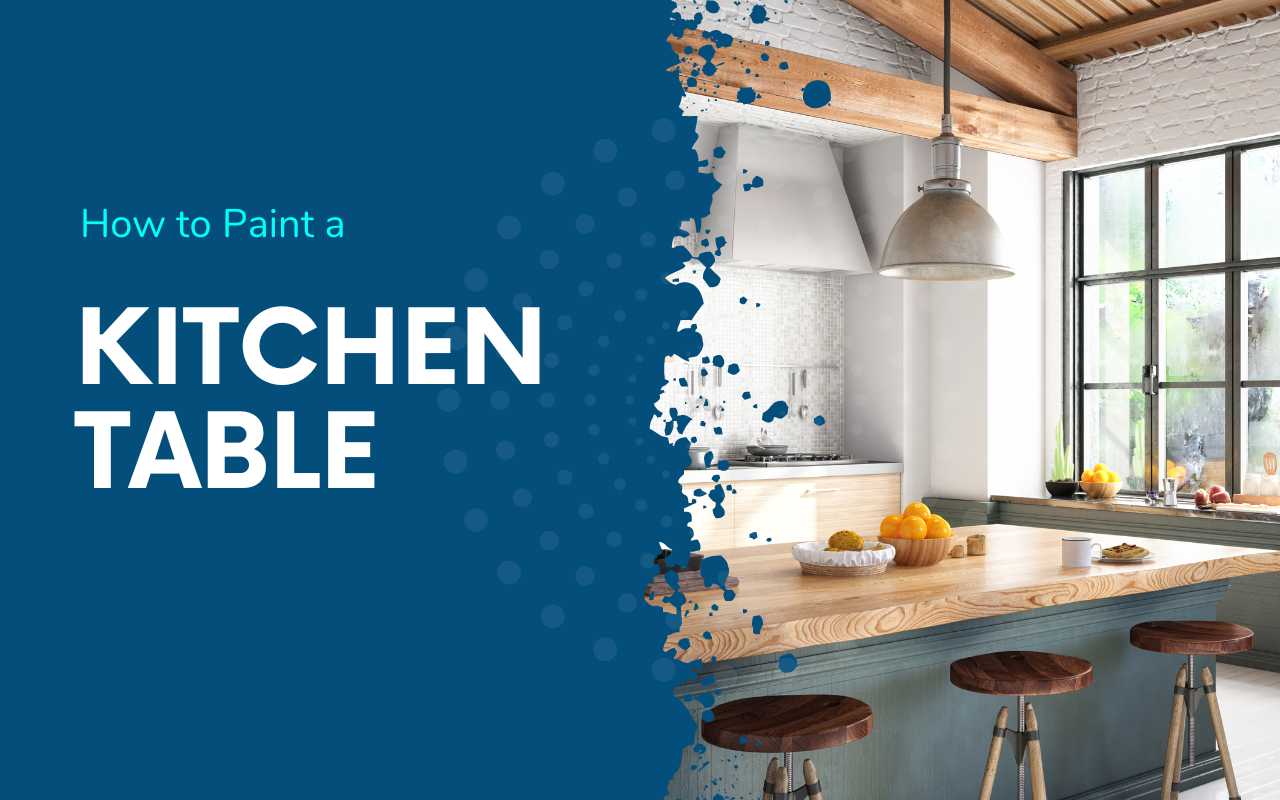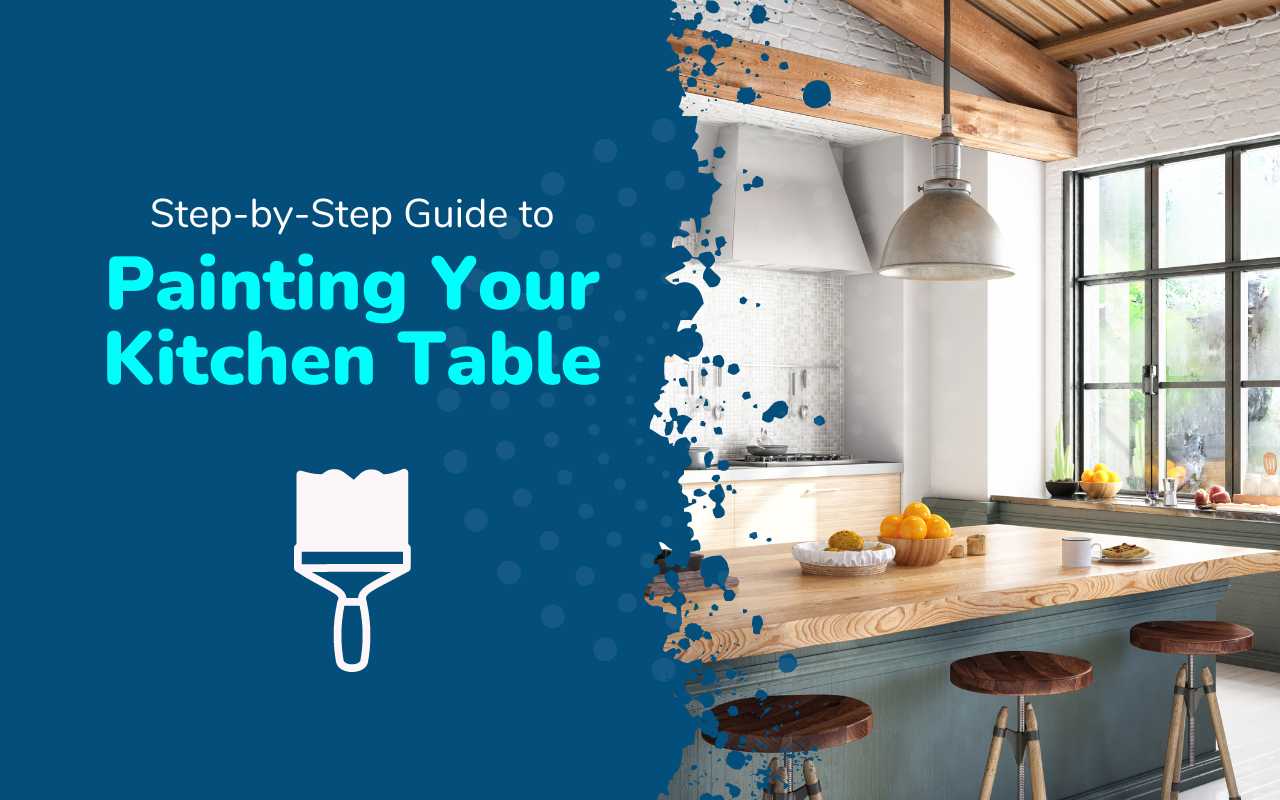
- Thu, Jan 2024
- |
- Mayas Painting
Revamping your kitchen space often starts with small yet impactful projects, like selecting the ideal paint for a kitchen table. This decision can transform an ordinary piece of furniture into a stunning centerpiece. Kitchen tables, serving as the heart of many homes, endure a lot of wear and tear.
Hence, choosing a paint that enhances its aesthetic appeal and withstands the rigors of daily use is crucial. This comprehensive guide will delve into the various paints suitable for kitchen tables, considering factors like durability, finish, and the overall look you wish to achieve. Whether aiming for a modern, sleek finish or a cozy farmhouse style, the right paint can make a significant difference.
Essential Tips for Selecting the Right Paint for Your Kitchen Table
Choosing the right paint is crucial when breathing new life into your kitchen table. It’s not just about picking a color; it’s about understanding the types of paint available, their finishes, and how they hold up under the daily demands of kitchen use. Here’s a concise introduction to help you start on the right foot.
Choosing the Right Type of Paint
Latex Paint: Known for its affordability and accessibility, latex paint is a popular choice for kitchen tables. However, it requires careful preparation, including thorough cleaning, sanding, and priming. While it dries quickly, the curing time can be lengthy, and the finish might remain soft and vulnerable to damage.
High Gloss: Offering a durable and shiny finish, high gloss paint is resistant to wear and tear but demands significant maintenance and preparation. It’s an excellent choice for a table that sees frequent use.
Satin Finish: Satin balances the matte look of flat finishes and the resilience of high gloss. It’s easier to clean and more damage-resistant, making it a practical and attractive option for kitchen tables.
Acrylic Paint: Similar to latex but with its unique characteristics, acrylic is scratch-resistant and resilient. It’s easy to apply and comes in various colors, though it can be prone to brushstroke marks.
Considerations for Color and Finish
White Paint: If opting for white, be aware that various shades and tints exist. It’s advisable to test different samples to find the perfect match for your kitchen.
Finish Removal: Before painting, you may need to remove the old finish from your table. Techniques include sanding, using chemical strippers, or employing solvents, depending on the existing finish type.
Preparing and Painting Your Table
Sanding: Essential for creating a smooth surface and ensuring better paint adherence.
Priming: A primer will help the paint stick better and last longer.
Application: Apply paint evenly, following the wood grain, and allow sufficient drying time between coats.
A Step-by-Step Guide to Painting Your Kitchen Table

Painting a kitchen table is more than a quick DIY project; it’s an opportunity to transform a functional piece of furniture into a personalized statement in your home. Below is a comprehensive guide encompassing various aspects, from paint selection to the finishing touches.
Selecting the Right Paint
Latex Paint: Ideal for those on a budget, latex paints are easy to access and apply. However, they require a well-prepared surface and a longer curing time.
High Gloss: If durability and shine are your priorities, high gloss is the way to go. Keep in mind that it needs more maintenance and thorough prep work.
Satin Finish: A satin finish is a great choice to balance a matte look and durability. It’s easier to clean and withstand daily kitchen activities well.
Acrylic Paint: Known for its resilience and scratch resistance, acrylic is user-friendly and available in various colors. Be cautious of brushstrokes and smaller container sizes.
Color Choices and Their Implications
White Paint: A classic choice, white can open up your space but comes in many shades. Sampling is critical to getting the right tint for your kitchen’s ambiance.
Preparing Your Table for Painting
Finish Removal: Removing the old finish is crucial before painting. Techniques like sanding, chemical stripping, or using solvents are effective, depending on the existing finish.
Sanding: Essential for a smooth base, ensuring better paint adhesion and a flawless finish.
Priming: A primer enhances paint adherence and extends the life of your paint job.
Painting and Finishing
Paint Application: Apply your chosen paint in even coats, aligning with the wood grain. Pay attention to drips and streaks for a smooth finish.
Final Touches: Consider additional coats for depth and durability, depending on the paint type. A top coat of a protective sealant like Polycyclic can extend the life of your paint job, especially in a high-traffic area like the kitchen.
Practical Tips and Insights for Painting Your Kitchen Table
Painting your kitchen table is not just about applying a new color; it’s about creating a durable, functional, and aesthetically pleasing piece of furniture. Here are some valuable tips, facts, and questions for the perfect paint job.
Tips for a Lasting Paint Job
Quality Brushes Matter: Investing in high-quality brushes can significantly impact the finish of your paint job. Avoid brushstroke marks with good brushes.
Test Paint Colors: Before committing to a color, test it on a small section of the table or a similar material to ensure it suits your kitchen’s lighting and decor.
Multiple Thin Coats: Rather than one thick coat, apply multiple thin layers of paint. This ensures even coverage and reduces the chances of drips and streaks.
Drying Time: Allow ample drying time between coats. Rushing this process can result in a finish that could be more durable.
Frequently Asked Questions
Q: Can I use any paint on my kitchen table?
A: Choosing a paint formulated explicitly for furniture that can withstand wear and tear is essential. Latex, acrylic, and specialized furniture paints are good options.
Q: How do I know when to repaint my kitchen table?
A: Signs like chipping, fading, or extensive wear and tear indicate it’s time for a new paint job.
Q: Do I need to sand the table before painting?
A: Yes, sanding is crucial for removing the old finish and ensuring the new paint adheres properly.
Interesting Facts
Historical Perspective: The practice of painting furniture dates back centuries and was often used to protect pieces and add decorative elements.
Color Psychology: The color you choose for your table can influence the mood in your kitchen. For instance, blue can create a calming atmosphere, while red might stimulate appetite and conversation.
By following these tips and considering these facts and questions, you can ensure that your painted kitchen table looks great and stands the test of time in style and durability.
Final Touches: Elevating Your Kitchen Table with the Perfect Paint
Revitalizing your kitchen table with the right paint can significantly uplift your space, blending functionality and style. This guide offers valuable insights into choosing the best paint and techniques for a lasting finish. Whether you’re aiming for a sleek, modern look or a cozy, rustic feel, the right paint can transform your kitchen table into a cherished centerpiece, enhancing the heart of your home.

